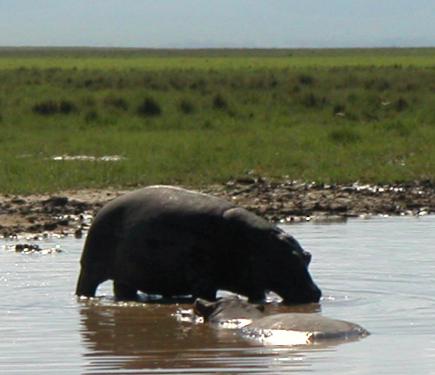
Where We Be
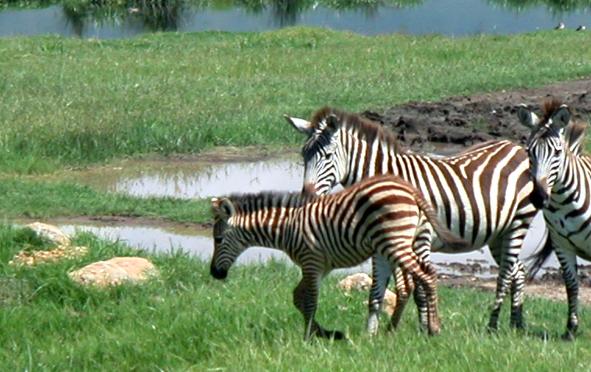
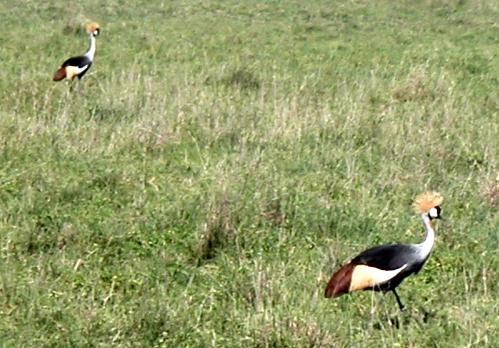
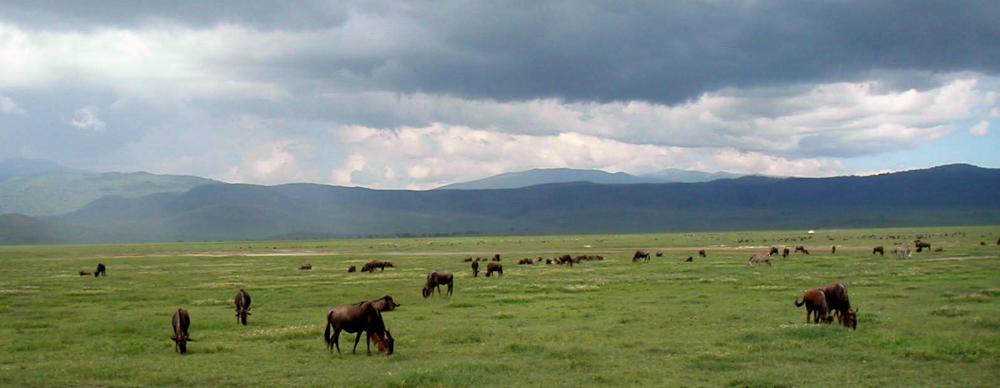

| Ngorongoro Crater, Tanzania |
| Ngorongoro Crater is one of the most iconic wildlife areas in Africa. We wish everyone could see it at least once in their lives. |
| We saw thousands of flamingo in Lake Magadi, the enormous soda lake near the center of the crater. We also observed many crowned crane with their distinctive feathery gold bristles, usually in pairs foraging on the ground, as well as European storks, kori bustards (the heaviest flying bird, weighing in at 40 pounds), and dive-bombing kites. |
| Meanwhile, we caught sight of this huge bull elephant with his long tusks nearly dragging on the ground |
| What a perfect way to finish our safari day! |
| We saw some sixty hippo altogether in the crater, including these two wading in a pool by the road |
| African buffalo, also known as "the Black Death" or "widowmakers," gore and kill over 200 people every year. It's sometimes said they kill more people in Africa than any other animal. |
| The zebra's stripes are said to repel biting flies. Other hypotheses are that the stripes confuse predators or reduce body temperature. |
| The intermingling of species all in the same area can be a surprise at first. Sometimes we'd even see a predator like a hyena resting nearby -- but the herd animals seem to know when predators are a threat and when they're not. |
| Once you've heard the zebra's distinctive whinnying sound in the wild, you'll never forget it |
| The next day was one of our favorites of the trip. The profusion and diversity of wildlife here is wow-inducing. |
| We saw large, healthy herds of zebra -- perhaps the only animal more prevalent in the crater than wildebeest |
| That evening we sat at a table for two next to a picture window as the sun set over the crater. Out on the patio the chef cooked up beef shish-kebab with BBQ sauce, which he served with ugali, a favorite local dish made of thick mashed-potato-like corn paste. |
| From Ngorongoro Wildlife Lodge high up on the crater rim, we used binoculars to check out the wildlife -- but from the top the only animals we could identify were elephant, rhinoceros, and cape buffalo |
| It's impossible to tell from this photo, but a pride of five lion rests under these trees |
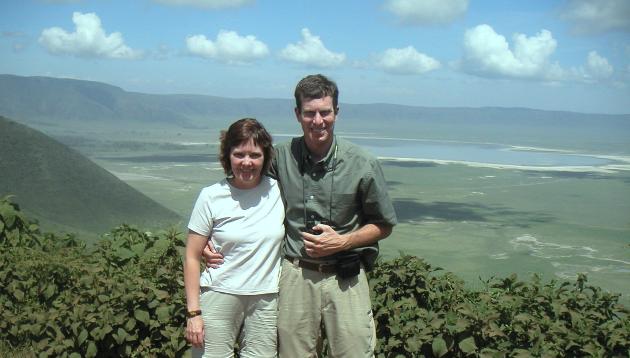
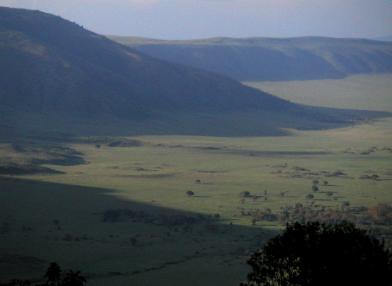

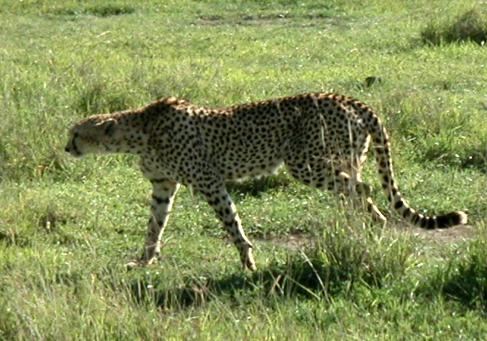
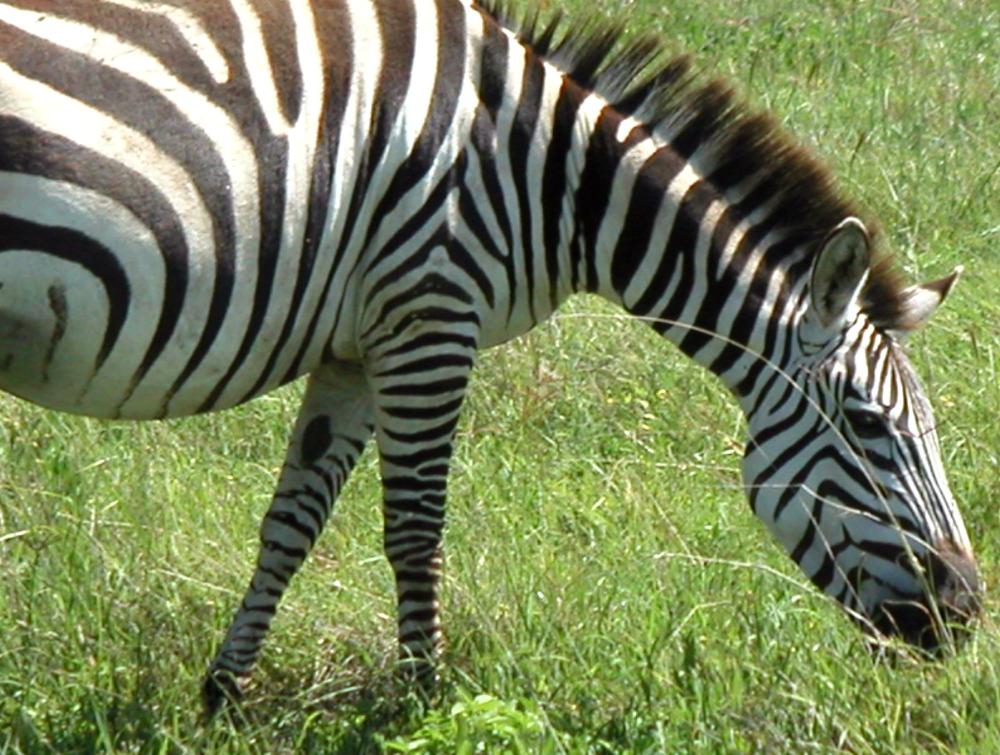
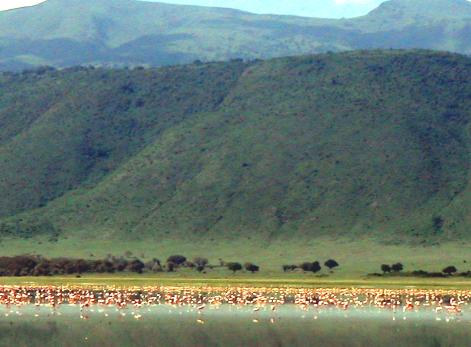
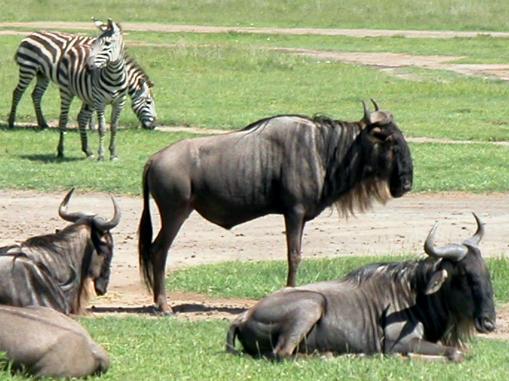
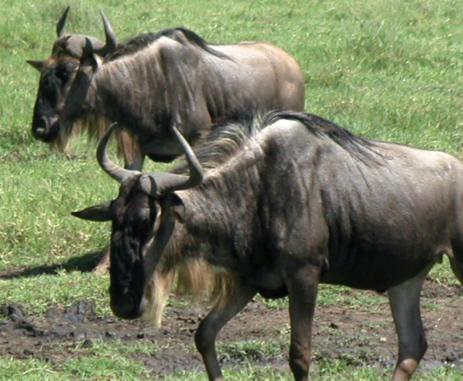
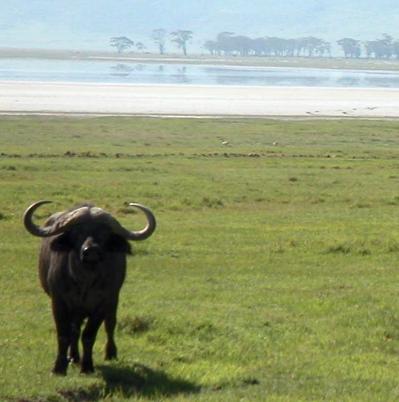
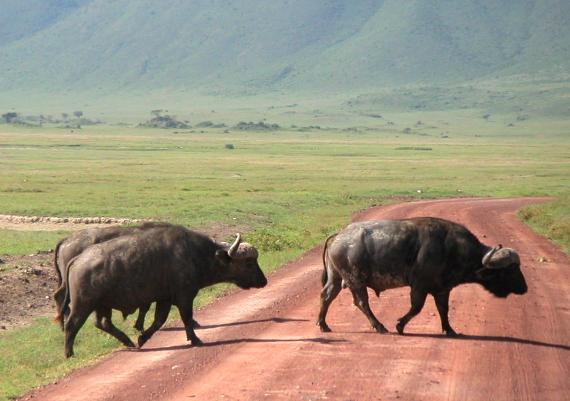
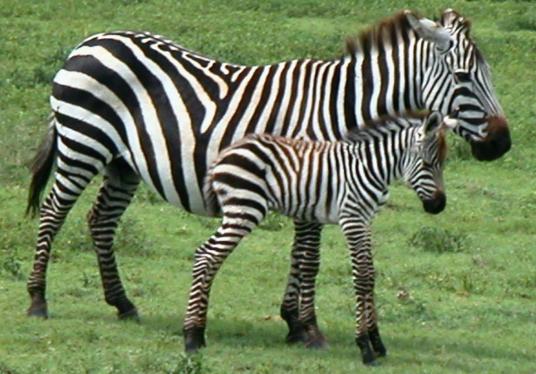
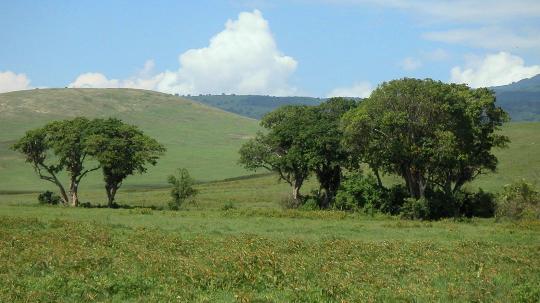
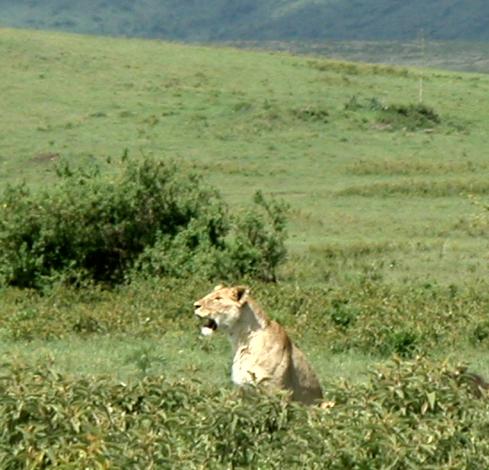
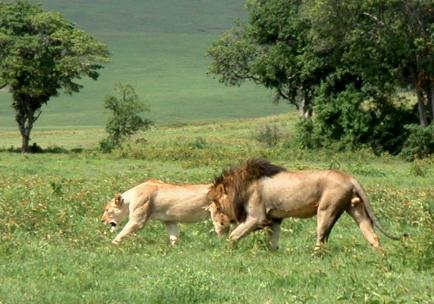
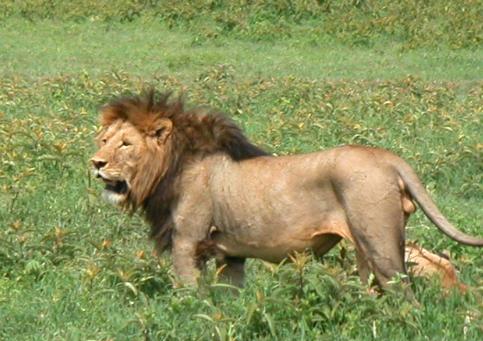
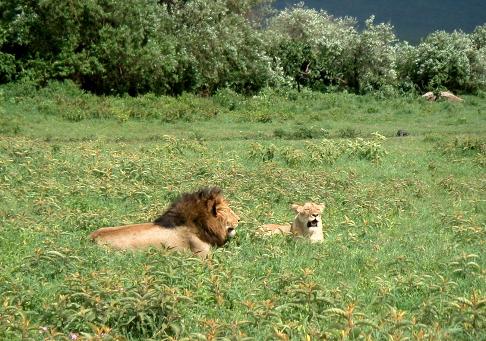
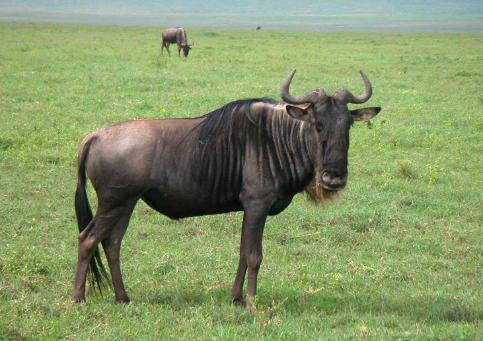
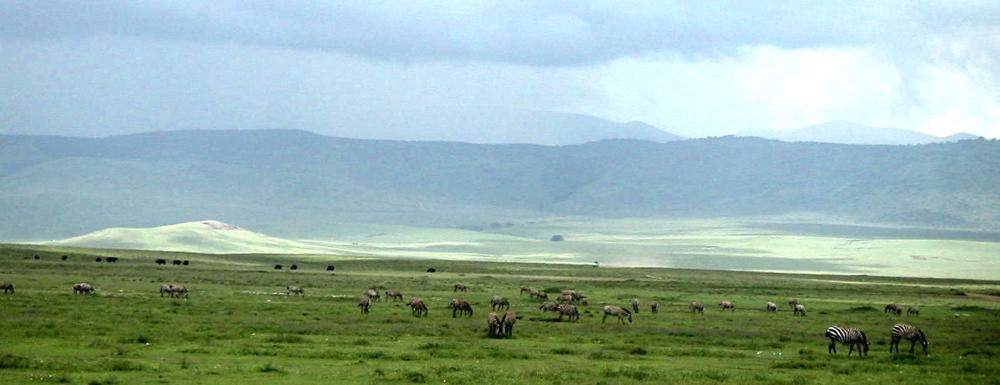
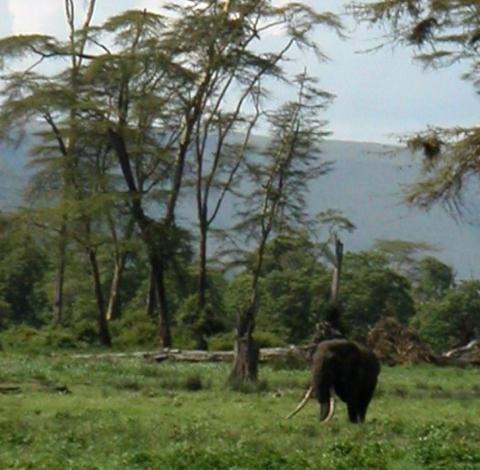
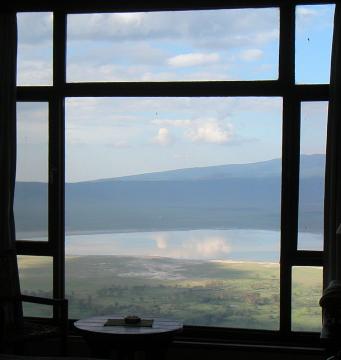
“Eighth Wonder of the World.” “Original Garden
of Eden.” Ngorongoro Crater is one amazing
place. If you have only one day to spend on
safari in Tanzania, spend it here. The concentra-
tion of wildlife is astonishing. Once a volcano, it
is now the largest inactive, intact caldera in the
world -- 14 miles (23 km) across at its widest
point and 2,000 feet (610 m) deep. Ngorongoro's
crater floor is mostly open grassland and is a
microcosm of East African scenery and game.
There are 25,000 larger animals within the crater
itself. The only large animals not found in the
crater are impala, giraffe, topi, and crocodile.
We entered the crater down a steep road and
almost immediately saw a family of four cheetah.
Three warthogs seemed to dare the cheetah to
chase them. After that, in quick succession, we
saw two hippo wading in a pool, thousands of
flamingo in Lake Magadi, large herds of zebra,
wildebeest, and cape buffalo, fifty more hippo, a
hyena napping nearby, six endangered black
rhino, numerous elephant (including a bull with
huge tusks), gazelle, hartebeest, eland, jackel,
and -- the perfect finish -- a pride of five lion.
of Eden.” Ngorongoro Crater is one amazing
place. If you have only one day to spend on
safari in Tanzania, spend it here. The concentra-
tion of wildlife is astonishing. Once a volcano, it
is now the largest inactive, intact caldera in the
world -- 14 miles (23 km) across at its widest
point and 2,000 feet (610 m) deep. Ngorongoro's
crater floor is mostly open grassland and is a
microcosm of East African scenery and game.
There are 25,000 larger animals within the crater
itself. The only large animals not found in the
crater are impala, giraffe, topi, and crocodile.
We entered the crater down a steep road and
almost immediately saw a family of four cheetah.
Three warthogs seemed to dare the cheetah to
chase them. After that, in quick succession, we
saw two hippo wading in a pool, thousands of
flamingo in Lake Magadi, large herds of zebra,
wildebeest, and cape buffalo, fifty more hippo, a
hyena napping nearby, six endangered black
rhino, numerous elephant (including a bull with
huge tusks), gazelle, hartebeest, eland, jackel,
and -- the perfect finish -- a pride of five lion.
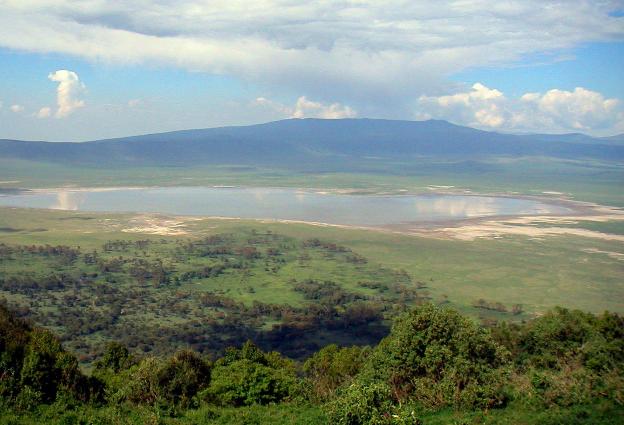
| Cheetah are rare in the crater but we lucked out and saw a family of four right off the bat. Wildebeest, on the other hand, are everywhere. |
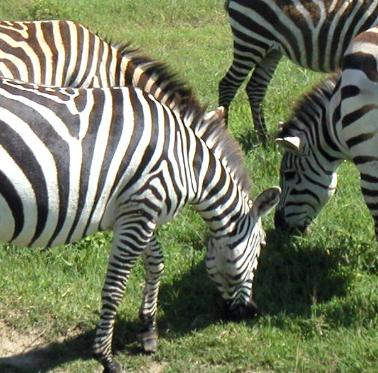
| After lunch we saw this newborn zebra, still wobbly on its feet. We watched it try to nurse under it's mom's forelegs first before it figured things out! |
| We stayed put for an hour watching as the lions became more active in the late afternoon |
| This lioness eventually flipped upside down, put her paws up in the air, and fell asleep with her legs splayed in heedless bliss |
